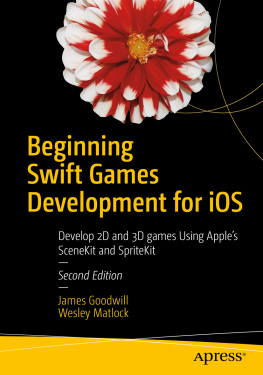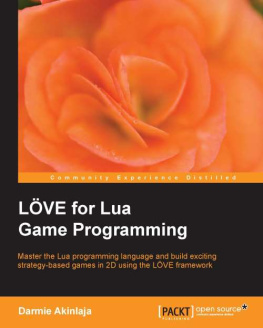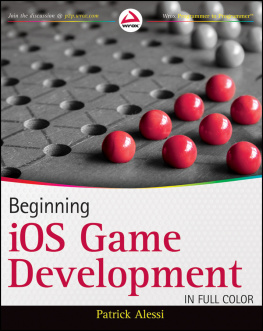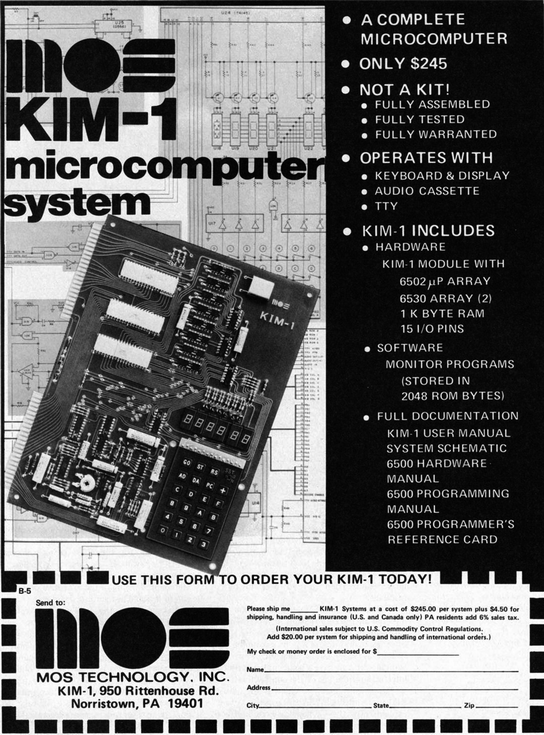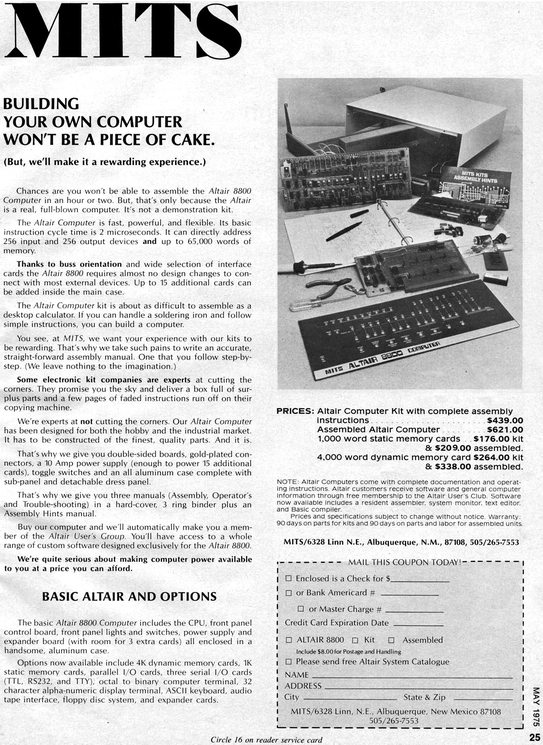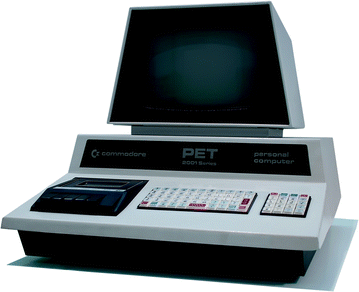1. Computers for the Masses, not the Classes
A lot has been written about Jack Tramiel (19282012) and, undoubtedly, much more is yet to be written about a self made business man with an iron fist who managed to build an empire and ignite a technological revolution out of nothing.
Born in Lodz, Poland, as Idek Tramielski (or Jacek Trzmiel, according to different sources) he emigrated to the USA after surviving the horrors of Nazis concentration camps in Auschwitz during World War II. In 1952, after learning how to repair office equipment while serving in the US Army, he started out his own small typewriter repair shop in the Bronx, New York, while also working as a taxi driver. Then, in 1954 he founded the Commodore Portable Typewriter Company and moved to Toronto, Canada, to assemble and sell typewriters imported from Eastern Europe, something that wasnt legally possible in the US during those cold-war years. The company was then renamed to Commodore Business Machines (CBM) when formally incorporated in 1955.
However, in 1966 the pressure from cheaply imported Japanese typewriters, together with a financial scandal, almost put CBM out of business and only the intervention of a Canadian investor named Irving Gould (19192004) managed to keep the company afloat. Gould bought 17 % of the shares, becoming Commodores Chairman. Under his influence the company shifted focus from typewriters to calculators, moving back to the USA in 1968 with a new headquarter in California.
Unfortunately, savage competition and price wars led once again by Japanese calculator manufacturers as well as Texas Instruments, brought Commodore on its knees in the mid 70s.
It was at this critical time, in 1976, that Jack made one of the most significant business decisions of the century, asking Gould to finance the acquisition of MOS Technology with a $3 million investment that enabled Commodore to implement its own vertical integration strategy, i.e. build as many components as possible for its own products in-house, without relying on external vendors.
At the time, MOS was a relatively small semiconductor and chip manufacturer that, thanks to the genius of Chuck Peddle (1937) and a team (1937) and a team of extremely bright engineers who had previously worked together on the first 6800 Motorola CPU, had just released a new microprocessor: the 6502 . The new CPU was designed to be as flexible as possible to suit applications for a multitude of devices and home appliances and was revolutionary in many respects, including its price: at a time when Motorola and Intel were selling their 6800 and 8080 CPUs respectively for a few hundred dollars apiece, the 6502 was available for $25 only! This astonishing feat was made possible also thanks to a unique manufacturing process in place at MOS that allowed for producing chips with a much higher success rate: in those pioneering days, in fact, up to 70 % of manufactured chips at Motorola and Intel were defective and had to be thrown away, rising the final costs for the good ones left.
Anyway, to capture peoples attention and show the 6502 wasnt a toy, like some people suspected at first due to its ridiculously low price, Peddle and his team also went on to design a dedicated computer based on it, the KIM-1 (short for Keyboard Input Monitor, see Fig. ).
Fig. 1.1
Tens of thousands of KIM-1s were sold to budding engineers from its debut in late 1975 till 1980. Here one of the first ads published in computer magazines in 1976
Although the KIM-1 was a very simple computer with only a 1 KB RAM, it managed to offer very handy features like saving programs to a tape device. This, together with an extensive documentation, made it relatively user friendly (for the time) and made the computer a perfect tinkering machine for the new, burgeoning group of computer hobbyists and hackers, enabling them to experiment freely and learn how to use the new tool.
MOS started selling the KIM-1 towards the end of 1975 and, despite its essential simplicity, it deserves a very important place in history since it was the worlds first single board microcomputer: like later home computers, all main components were mounted on a single motherboard. This was something quite revolutionary at the time if we consider that all other contemporary microcomputers, like the Altair 8800 (Fig. ), were designed instead as a set of interconnected boards, each hosting components dedicated to specific tasks, like memory, CPU, I/O interfaces etc.
Fig. 1.2
A 1975 ad for the Altair 8800 . The Altair was the first personal microcomputer but it was designed following a much different approach than the KIM-1 and later machines. Note how the ad acknowledges the challenges of assembling the kit but emphasizes how rewarding the experience would be
Commodore and MOS were a perfect match and, under the influence of Peddle , Jack soon agreed Jack soon agreed to start diversifying Commodores portfolio, progressively reducing its involvement in calculators and moving into fully fledged computers instead.
The first fruit of this new focus was the PET (Fig. ), short for Personal Electronic Transactor, just a made-up name to justify the cute acronym. The PET was the first all-in-one personal computer integrating keyboard, monitor and cassette recorder for storing and loading programs.
Fig. 1.3
The PET 2001: the first all-in-one personal computer. This figure is licensed under CC and copyright is owned by Tomislav Medak and Bill Bertram
The PET was first publicly presented in January 1977 at the Winter Consumer Electronics Show (CES) and later at the West Coast Computer Faire, where also Steve Jobs and Steve Wozniak were presenting their seminal Apple II , running a MOS 6502 CPU as well.
As we can see, times were mature for personal and home computers to come and competition romped up quickly. The sudden interest and growing numbers of players in the personal computing space surely alarmed Jack Tramiel who, due to his previous negative experiences with typewriters and calculators, knew that, soon or later, someone would have come to conquer the market by bringing prices down.
This time, though, things were going to be different thanks to the MOS acquisition. Now Commodore had an advantage and Jack would have not allowed anyone, not even the Japanese, to undercut his newly found business niche.
Jacks next move became evident in an historical meeting hold near London in April 1980 where all top Commodore managers were gathered together to discuss upcoming strategies and new products. Over there Jack announced his intention to develop a new color computer to be sold at an extremely low price, less than $300, to finally start selling the computing revolution to the masses, not the classes. Such a low price point, especially for a color computer, was completely unheard of but the initial shock and scepticism that such a plan raised around the table was quickly dismissed by Jack shouting Gentlemen, the Japanese are coming, so we will become the Japanese!

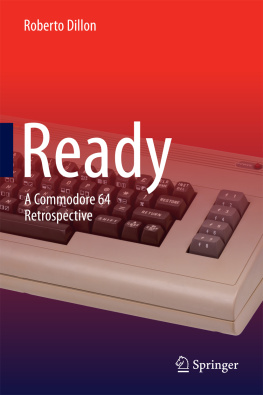







![Damilare Darmie Akinlaja [Damilare Darmie Akinlaja] - LOVE for Lua Game Programming](/uploads/posts/book/124110/thumbs/damilare-darmie-akinlaja-damilare-darmie.jpg)
